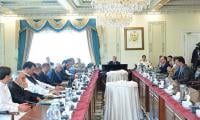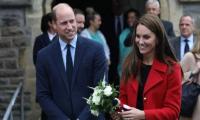ISLAMABAD: It is none other than PTI government that has made the history by offering itself after completion of first 100 days for audit of the heavy agenda consisting six themes and 39 initiatives that top leader of the PTI presented on May 25 well before the general election 2018. All the intellectuals and economic pundits are of the view that 100 days’ time is too short to judge the performance of a government. However, they say that in this short time it can be evaluated through the steps taken so far whether the state of affairs are in the hands of the right people or not. They say it can easily be judged if the government has taken the required measures in right directions or not. In this perceptive, PTI’s 100 days performance can be compared with the first 100 days of PML-N government. The PTI government stands nowhere when compared with that of PML.
Ishaq Dar took oath on June 7 as finance minister after PML-N won 2013 general elections. He immediately swung into action and spent one day and two nights in the finance ministry and came up with federal budget on June 12. Keeping in view his strategy to move IMF, he announced 19 prior actions in the budget to secure the bailout package from the Fund. Dar managed signing of $6.4 billion bailout package on July 4, 2013 with no chaos and uncertainty at all. The confidence of the investors and stock market restored within no time.
The first action he took to layoff Rs483 billion which were payable to IPPs ensured an increase in electricity generation by 1500-1700MW at the time when the country was facing 22 hours loadshedding. The Rs483 billion were disbursed in 55 days. The PML-N economic managers’ team, headed by Ishaq Dar, was clear-headed as they did a lot of homework prior to joining the government. When the PML-N came to power the country was virtually on the verge of default as State Bank’s reserves were at $2.75 billion with zero external inflows.
However, the finance ministry’s top officials on the condition of anonymity admitted in lengthy background discussions the bitter fact that Asad Umar, who knew well that he would be the PTI government’s finance minister, did no homework to tackle the country’s economy.
Asad Umar, they argued, has failed in the short-term management on tackling the economy and getting the country out of chaos, but his team is on the toes on long-term management. This resulted in dollars appreciation. However, total appreciation of dollar value increased by 30 percent from Rs105 to 115 in Abbasi era, and during the caretaker regime dollar further appreciated to Rs125. In the PTI government, the dollar value went up to Rs135 in the open market on account of indecisiveness owing to which Pakistan debt has increased by Rs3,000 billion and stock market suffered a loss of Rs1,000 billion.
The government has done nothing on expectation managements too, as the PTI stalwarts have raised the masses’ expectations by saying they will get huge relief and the people will feel change in real terms in the first 100 days of PTI government.
However, they said the government has taken the much-awaited action in the FBR. The Policy Wing has been separated from the administration and cabinet will soon approve this initiative, and on top of that organisational development plan in the FBR is also ready and will roll out by end of January. And the more to come and be implemented in the FBR, which will help yield required dividends.
They said after assuming power, Asad Umar should have carved out the strategy on how to tackle the gigantic problems of current account deficit and arranging the finances to lay off the external liabilities. They said in PPP government when Shaukat Tarin as finance minister chipped in, he immediately came up with the homegrown programme to tackle the then current account deficit, which at that time, was at 8.6 percent. That time was very difficult as for some months the oil prices in the international market had also hit $147 per barrel. However, Tarin became advisor to PM on Finance in July 2008 and finalised the programme with IMF in September, 2008 which had pulled the investors and stock market out of uncertainly. But the incumbent finance minister has not yet succeeded in doing away with the chaos and uncertainty even after having $ 6 billion loan package from Saudi Arabia.
However, in the first 100 days of PTI government, foreign direct investment has tumbled by 55 percent, fiscal deficit increased to 1.4 percent if compared with corresponding month of last year 2017 which stood at 1.2 percent. The revenue target of Rs68 billion has been missed as it grew by 7-8 percent only. Development expenditure has been slashed down by 25 percent in PSDP and 50 percent in Punjab development budget causing surge in unemployment. However, contrary to the claims of Prime Minister Imran Khan about austerity drive, expenditures have increased by 17-19 percent.
More importantly, inflation has swelled to close to 7 percent. The wholesale consumer index price has jacked up by 13 percent which will further fuel the consumer price at retail level exposing the masses to another deadliest wave of inflation.
The sizeable cuts in the federal and Punjab develop budgets will trigger surge in unemployment. The growth in large manufacturing scale turned negative. However, the oil prices in the international market have decreased from $75 per barrel to below $50 barrel which will be not less than a bonus for the government and time will tell how the government’s economic managers take the advantage of the low prices of oil in global market in favour of country’s economy. The current account deficit, however, has reduced by 4.6 percent to $4.8 billion in four months from $5.1 billion on account of corrective measures taken by the current regime.
However, the PTI government cannot be held responsible for the fiscal and trade deficits as these are not the result of current government’s measures.
Dr Hafeez Pasha, Pakistan’s well-known economist says 100 days agenda is too heavy, but it can be prioritised with revitalisation of economy on top and it would have been much better if the revitalisation of economy is renamed as stabilisation of economy.
Hafeez Pasha, however, said the biggest challenge of the government is to arrange $27-30 billion to cater to the needs of country’s financing requirements in the current financial year. Pakistan needs massive financing to substantially reduce current account deficit and to cope with the external liabilities needs.
He showed his worrisome about the increase in the growth in wholesale consumer index price by 13 percent saying it will have rollover effect on end consumers. He said increase in dollar value by up to 30 percent has opened the gates of inflation, but showed 4 percent growth in exports. Hafeez Pasha suggested the government to come up with clear economic policies on how to advance the country as in 100 days’ time, uncertainty and chaos are prevailing and the business community of the country is quite upset.
Referring to the statements one given by Finance Minister Asad Umar that the issue of balance of payment is over and other by Prime Minister while chairing the EAC meeting saying engage the IMF and if no progress is made initiate the working on Plan-B, Pasha said these two statements have further fuelled the uncertainty in the market. The stock market has plunged below 41,000 points. He argued Asad Umar should clarify his statement on balance of payment issue. Only Saudi Arabia has announced $6 billion package out which $3 billion will be used as deposits in Pakistan reserves and Pakistan will not be able to use it.
“The parking of $3 billion in reserves will provide only a sense of stability and that’s all.” Pasha said the business community wants to know what has happened during the visits to China and UAE. “So far, no encouraging response has come from said two countries in terms of supporting Pakistan’s balance of payment, but Asad Umar says this issue is over and he should take Pakistan's business community into confidence on the issue whatever it is.”
Pakistan needs financing requirements of $18 billion as it was to lay off $8 billion as external liabilities and $12 billion for current account deficit. Out of $8 billion external liabilities, the government has already paid back almost over $2 billion and the remaining will be close to $ billion that is yet to be paid by end of current fiscal.
Top finance ministry’s officials said on condition of anonymity the talks with IMF remained inconclusive as their demands were very tough. They said the government should have increased the electricity and gas tariff after talks with IMF as prior action for loan, but the government increased the tariffs before talks. The Fund asked the government to raise power tariff more by 22 percent, and let the market forces to determine the value of US dollar. The Fund also wanted to increase the interest rate which currently stood at 8.5 percent. And if this demand is honoured, the cost of debt servicing would escalate as the current debt servicing stands at Rs1.82 trillion. If IMF’s demand is accepted, further devaluation would increase the external debt servicing cost. Fund also wants all the details of economic transactions, agreements done with China.
In the emerging situation, the government of the day is working both ways - engaging IMF and carving out Plan-B. The Plan-B is going to be firmed up in next 2-3 weeks. The government is expecting a package from China and UAE in 2-3 weeks too. So far, the government is comfortable with reserves of $8.5 billion parked with State Bank of Pakistan.
Dr Furrukh Saleem, spokesman of PTI government on economy, admitted the fact that the government has failed to end the chaos and uncertainly that has gripped the investors and players of Pakistan stock market. He said the government needs to take business community into confidence about the future course of action. However, the government is on its toes on engaging IMF again and at the same time is working on Plan-B.
While examining the PML-N- government headed by Nawaz Sharif, it is found that during the first four years to June 2017, tight fiscal and monetary discipline and policies yielded positive results. The budget deficit was brought down from 8.2% of GDP to 5.8%, despite an extraordinary expenditure relating to Operation Zarb-e-Azb (war against terrorism) which was around Rs100 billion per annum; SBP Repo Rate from 9% to 6.25%; Export Re-Finance Rate from 8.4% to 3%; Long Term Finance Facility Rate from 8.4% to 3% and inflation from annual average of 12% during 2008-2013 period to 4.16% in FY 2017. Most of these indicators were best in the last four decades.
The federal tax collection increased by 3.38% in Financial Year 2013 at Rs1,946 Bio to Rs3,367 Bio in FY 2017 indicating an average annual growth of 18% and Rs3,935 in FY 2018. During this period, the Foreign Direct Investment (FDI) increased from US dollars 1,456 million to 2,731 million and foreign remittances from US dollars 13.92 billion to 19.35 billion. National Foreign Exchange Reserves rose from US dollars 7.5 billion in Feb 2014 to 21.4 billion by June 30, 2017, after having touched a peak of dollars 23.1 billion on 30th June, 2016.
During the PML-N government, Pakistan succeeded in achieving 11-year high GDP growth rate of 5.3% in FY 2017 and 5.8% in FY 2018. And more importantly, the size of economy grew to over $300 billion.
However, the PML-government failed to increase exports which first tumbled to below $20 billion and then increased to $23.5 billion while the exports were at $25 billion in PPP era. The PML-N government, however, had extended packages of Rs180 billion and then Rs67 billion for increase in exports. These packages helped increase exports growth by 12 percent.
The Pak rupee remained stable against US dollar during the four years to June 2017 except a slide of around four rupees to the dollar due to the political sit-in (dharna) staged in Islamabad for over four months. The Pak rupee rate to the dollar was Rs 98.81, Rs101.78, Rs104.84 and Rs104.85 on 30th of June of 2014, 2015, 2016 and 2017 respectively. Stable rupee factor was a contributor in decades-low inflation and interest rates and low increase in the cost of living. And Bloomberg, in its report on December 12, 2017, declared Pak rupee the most stable in the region.
The impressive output of PML-N government on economic front had attracted appreciations of global institutions. PriceWater House Cooper in its report on November 2017 projected Pakistan to become the 20th largest economy by 2030, but turbulence that prevailed during the PML-N government has barred Pakistan from achieving that target.
However, PTI government spokesman Dr Furrukh Saleem says the State Bank of Pakistan in 2016 and 2017 had injected $7.7 billion in the open market for dollar stabilisation. Ishaq Dar responded saying the gap between imports and exports plus remittance is bridged by the central bank and this amount was not injected for stock exchange rate stabilisation.
Dar said devaluation of Pak rupee is detrimental to overall economy. He argued rupee devalued by 30 percent for exports sector, which is 8-9 percent part of economy, and with this export sector will benefit, but over 92 percent economy will suffer. Imports become costly, cost of living increases, inflation rises and cost of manufacturing increases. He said his government extended to export sector two packages - one of Rs180 billion and other of Rs67 billion - and his government had decided to increase the exports up to $30-35 billion if voted to power. He said Brazil, an oil-rich country, when started devaluing its currency on the directive of IMF, its economy destroyed.
About the loans of the country, Dar says: “A lot of political debate is going on in the media. It needs to be understood that for any government, there is an opening figure of Public Debt to which is added in its tenure the amounts of yearly budget deficits along with the conversion loss on foreign portion of Public Debt due to devaluation of Pak rupee in such period. As the said budget deficits are duly approved by the parliament, the whole process is transparent and there should be no hidden surprise for anyone. The total Public Debt to GDP, he said increased by less than 2% during four years to June 2017 due to additional extraordinary security-related expenditure for Operation Zarb-e-Azb and heavy investment in public sector development projects with clear focus on elimination of gas and electricity loadshedding from the country, improving highways transport, information technology and communication sectors etc. Incidentally, Public Debt to GDP of US in 2018 is 106%, Japan 221%, Spain 106%, Italy 138%, Belgium 115% and Singapore 105%, which all are far too above than Pakistan’s.
The State Bank of Pakistan reports verifies Dar assertions about the public debt of the country, which the government of Pakistan places in Federal Consolidated Fund (Account No 1) and pays from this account too, stands at Rs 23.050 trillion as per FRDLA definition. The Rs23.050 trillion loan as per SBP report is 60.1 percent of GDP. The IMF loan and foreign and domestic loans of the government are handled through account No 1. Dar said PTI says the government of Pakistan has the loans of Rs30 trillion. He said PTI experts include 10 items while calculating the loan. They also include the loans of public sector entities and private companies which is not true. Public sector entities get the loan against their assets. He said recently ECC of PTI government has decided to raise Rs300 billion loan through Islamic bonds against the assets of DISCOs. Such kinds of loans are not treated through Account Number 1. The IMF also recognises the figure of Rs23.050 trillion loans. However, PTI says while referring to CPEC energy projects they (CPEC companies) are paid back in dollars not from account Number 1 but from Pakistan exports and remittances.
Ishaq Dar also raised the valid point arguing that when loans are discussed then per capita assets worth should also be discussed. He mentioned that PTI government decided to sale out RLNG power plants of Balloki and Haveli Bahadur Shah. He said these plants were built partly on loans which were converted into assets and now government wants to earn $2-3 billion out of them. He also said Motorway from Islamabad to Lahore was built at the cost of Rs21 billion and his government had floated the bonds on the worth of that portion of Motorway which stood at Rs250 billion. He ended up saying when loans are used to make assets, then it’s no problem and his government did that.
When asked why FDI has tumbled down by 55 percent, a top government official said the FDI has gone down as it is only coming from China, while FDI from other economies is nominal.
On 1.4 percent fiscal deficit rise when compared with corresponding period of 2017, the official said fiscal deficit has increased because of increase in the defence spending and surge in debt-servicing cost.
He said the total debt servicing in the first quarter stood at Rs507 billion, higher by Rs90 billion or 20.2%, according to the summary. Defence spending amounted to Rs219.4 billion, up Rs37 billion or 20.3%. Fiscal deficit increased because of less recovery of revenue and increase in spending, he added, adding that loss in collection of revenue in the head of withholding tax and domestic sales tax was also a factor.
When asked why expenditures went up by 17-19 percent amid talk about austerity, the official said it was due to increase in defence spending and surge in debt-servicing cost.
The official also said dollar appreciation must be based on economic fundamentals. Pakistani products were not being entertained in the international markets because of the price competitiveness necessitating dollar appreciation up to Rs135 which factually should have been adjusted at Rs120. The PTI government, the official added, has further appreciated dollar value up to Rs135 for bailout package. He said there were two objectives - to increase exports and to slash down the imports.
Dr Ashfaq, an eminent economist, said the US dollar appreciation was imperative but it should have been adjusted at Rs124, not at Rs135.
He said he didn’t favour devaluation of Pak rupee, but it is necessary to devalue the local currency to make products competitive in the international market sometimes. But it is noticed that developing economies cannot take the advantage of the devaluation as imports become costly. He added the manufacturing cost increases manifold if import input in Pakistan’s local industry is 60 per cent. So, Pakistani economy did not increase the exports up to the mark by taking the advantage of the devaluation of local currency. However, the economies having nominal import input can take maximum advantage. He said Egypt had devalued its currency 100 percent on the directive of IMF, but its exports could increase.
Kasuri urged authorities of Pakistan and China to pull their resources to defeat forces seeking to disrupt the...
IHC said that several people had not returned the cipher copies they had, and asked if it meant it was right for the...
Gilani gave floor to Leader of Opposition Syed Shibli Faraz, who insisted that with unity they could take country...
Match witnessed intense action and dramatic twists, keeping fans on the edge of their seats until the final ball
Apex court bench was reconstituted after Justice Yahya Afridi recused himself from hearing the case earlier this month
ECP issued a notification in this connection pursuant to orders passed by LHC







